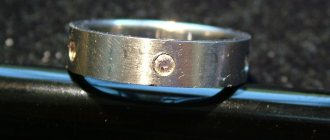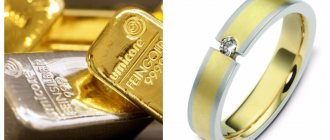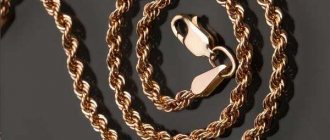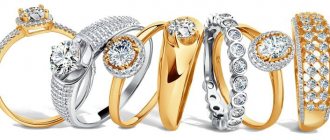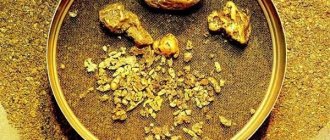Platinum, a jewel that came to Europe thanks to the Spanish conquistadors, is considered the “queen” among precious metals. Initially, Europeans did not appreciate platinum, calling it “bad silver,” but in the 19th century it became popular, all thanks to the famous French jeweler Louis-Francois Cartier. Today it is used to create a wide range of things - from jewelry to pacemakers. Together with the Platinum Lab company, we tell you what the advantages of platinum are over other metals, and where to find jewelry that can easily compete with the best quality white gold.
History of platinum in Russia
Platinum deposits in the Russian Empire were discovered at the beginning of the 19th century, and at first they did not attach any significance to these finds, mistaking the new material for white gold. However, already in the first quarter of the 19th century, rich placers were discovered and their development began. The main platinum mining area was the Urals, and the reserves of the discovered material turned out to be so large that Russia instantly took first place in the world in the extraction of this metal. The leadership remained for more than a century, until in the 40s of the twentieth century the world's richest platinum deposit was discovered in South Africa. During the Soviet period, all data on developments and production volumes were classified, since the military and space industries became the main areas of use of the material.
Russia now retains a confident second place in global platinum production. At the same time, the share of jewelry products is still very small - no more than 0.1% of global volumes.
Platinum jewelry is valued all over the world. Therefore, global brands also produce jewelry from this material.
Read our article The best platinum jewelry - TOP 5 world brands →
Platinum
Platinum (Pt) is the 78th element of the periodic table and is a steel-gray metal.
Platinum has been mined in South America since the 16th century. In Europe, this metal was unknown until the 18th century. In 1748, the Spanish navigator A. de Ulloa was the first to bring to the European continent samples of natural platinum found in Peru.
This metal was first obtained in its pure form from ore by the English chemist W. Wollaston in 1803.
It was not known in the Old World, but the Andean civilizations (Inca and Chibcha) found and used it since time immemorial. The Italian scientist Gilius Scaliger discovered the indecomposability of platinum in 1735 and thus proved that it is an independent chemical element.
The name platinum was given by the Spanish conquistadors, who in the middle of the 16th century. first became acquainted in America (on the territory of modern Colombia) with a new metal similar in appearance to silver (Spanish: plata). The Spanish word Platina literally means "small silver", "little silver". This disparaging name is explained by the extraordinary refractoriness of platinum, which could not be melted down, did not find use for a long time and was valued half as much as silver.
Natural platinum is mined in mines.
Platinum and its alloys are widely used in the production of jewelry. The global jewelry industry uses about 50 tons of platinum every year. Until 2001, a significant portion of platinum jewelry was consumed in Japan. Since 2001, China has accounted for approximately 50% of global sales. Russian consumption of jewelry platinum is 0.1% of the world volume.
Platinum is not a new metal for jewelry. The ancient Egyptians knew a lot about such jewelry: in excavations of tombs, researchers found the most elegant platinum jewelry.
The noble white color of the metal better sets off the natural color of precious stones, without giving them the yellowish reflections of traditional gold. Platinum is always of the highest standard—90 or 95 percent. Platinum does not cause allergy attacks, does not tarnish, does not oxidize, and does not lose its appearance due to scratches. But most importantly, it holds and holds diamonds and other precious stones with incredible strength. You can trust her with the most valuable stones.
The first to bring back the precious metal from undeserved oblivion was Louis Cartier: in 1895, he presented an entire collection of platinum and diamonds at his exhibition. Thus, a new idol has appeared in the jewelry world of fashion, which cannot be overthrown. Tiffani, Van Cleef & Arpels admitted their commitment to platinum behind the extravagant Cartier. Carl Faberge, who had a particularly keen sense of fashion and used all the latest technologies, did not remain indifferent.
In the years before World War II, platinum became firmly established in the fashion world, and since then, interest in the rare and noble metal has been constantly growing.
Today, the elegance of platinum has become the standard of noble, sophisticated style. Platinum is used to make wedding and anniversary rings, rings, bracelets, necklaces - the most luxurious diamond jewelry. The strength and fidelity of platinum have made it a symbol of the inviolability of marriage and love unions. An impressive list can be compiled of the legendary platinum jewelry, confidantes of famous love stories. Just look at the famous brooch in the shape of two leaves made of beautiful rubies and diamonds set on the finest platinum frames from Van Cleef & Arpels! This wonderful brooch was given by King Edward VIII of England in 1936 to Mrs. Simpson, because of his strong love for whom he later abdicated the throne.
Features, Authenticity and Proof
Platinum has some characteristics that will make it easy to determine whether the metal used in the product you are about to buy is genuine.
- First of all, platinum conducts heat very poorly. This means that even if you hold a ring or earrings close to the lamp, they will hardly heat up.
- The second sign will be the weight of the product. Platinum is a dense and heavy material, heavier than gold and silver. If it is difficult to determine by sight, you can always ask to weigh identical (or similar) in volume items made of platinum and gold or silver on jewelry scales. The platinum jewelry rate will be approximately 11% higher.
- This material does not react to the effects of weak acids and other chemical elements. This can easily be checked using an alcohol solution of iodine or ammonia (ammonia).
- Platinum purity is always high. In Russia there are three standards, of which two are considered the highest quality: 900 and 950. The material of the 850 sample is dull. If there is such a standard, and the product shines, most likely it has been treated with rhodium. Rhodium-plated coatings have a characteristic shine, but do not mean that this is high quality jewelry.
- Another useful property of this precious metal is the absence of allergies to it. Platinum is absolutely harmless for allergy sufferers, even those who have shown a pronounced reaction to silver and gold.
- The strength and ductility of platinum is very high, but its flexibility is low. This makes it a good material for inlaid jewelry, as it eliminates the risk of stones falling out.
- Platinum is also completely resistant to corrosion, and practically does not lose color or brightness over time.
The best gold jewelry - TOP Russian manufacturers →
What are the features of platinum
The main advantage of platinum is its increased wear resistance. Thanks to this, it is resistant to deformation and is able to securely fix precious stones in jewelry. Any inserts, be it diamonds, rubies, emeralds or sapphires, will sit as securely as possible and will definitely not fall out of the product.
Platinum has a noble silver-white hue and is similar in appearance to silver and white gold, but unlike the latter, it is not prone to darkening and does not lose its presentable appearance over time. Such jewelry is indestructible, you can safely swim in them, swim in the sea, and nothing will happen to them.
Moreover, platinum has a high content of pure precious metal (95% is platinum itself and 5% is platinoids such as palladium and ruthenium), therefore it is hypoallergenic and does not cause irritation on sensitive skin. But this is only provided that there is no nickel in its composition.
Find out more about platinum jewelry
Jewelry shapes
All popular groups of jewelry contain a certain proportion of platinum products. However, the properties of the material dictate certain conditions that affect the shape, patterns and design.
- Due to the high cost of the material, platinum products are not made too massive and heavy.
- In production, enamel, precious stones, and combinations with gold are used in conjunction with platinum.
- The combination of platinum and diamonds is considered to be the best, highlighting both materials favorably.
- Another popular design is embossing, textured surface treatments, engraving and inlay.
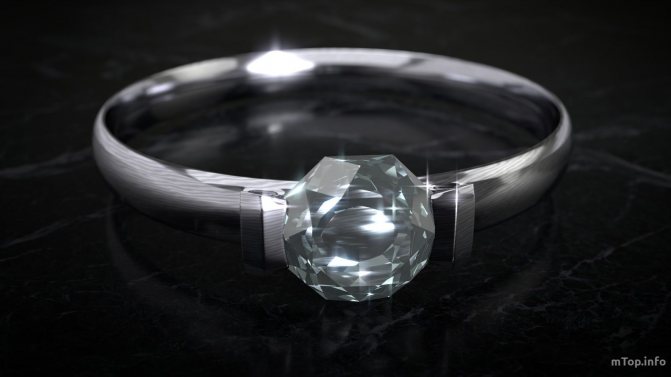
How to distinguish platinum from white gold
Visually distinguishing platinum from white gold is easier than it seems. It’s worth at least looking at the sample: the optimal mark for platinum is 950, less often 900 and 850, but these products turn out duller. Since platinum has a purer composition, it will therefore be heavier than white gold.
To be more confident, you can apply a drop of iodine to the product - the substance will darken (the darker it is, the higher the sample), and after removal it will not leave a trace. Another way is to place the product in a container with hydrogen peroxide: if it is platinum, the liquid will begin to bubble, but no reaction will follow from white gold.
Product care
Due to the durability and lack of change in appearance, platinum jewelry may seem like it requires no maintenance, but this is not true:
- Any product can become somewhat dull over time; this can be easily corrected by washing the jewelry in an ammonia soap solution, or using a special liquid for cleaning jewelry.
- To give your jewelry its pristine shine, you can turn to a jeweler - platinum can be easily ground and polished.
- It is better to store jewelry in separate boxes or bags, preventing it from getting scratched when bumped.
- If your jewelry contains gemstones, do not use strong chemicals to bleach it. Platinum will not be damaged, but stones may be damaged.
TOP Russian platinum brands
The low performance of platinum jewelry is primarily due to low demand due to fairly high prices. However, this material is gradually gaining its market segment. Here are some well-known brands that produce platinum products.
Platinor
Russian Platinum company, which sells products under the Platinor brand. On the market for more than 15 years.
- Is an official dealer of the Krasnoyarsk Non-Ferrous Metals Plant
- The main direction is chains of different weaves, the number of types is more than 100, most of them are diamond-cut
PlatinumLab
The brand was founded in Kostroma 12 years ago and specializes exclusively in platinum.
- We use only domestic raw materials for work
- Own production cycle “from start to finish”
- Works only with 950 grade material

SW "Platinum"
The jewelry brand has been on the market for 15 years. It is based on the Kostroma Jewelry Factory, which has almost a century of history.
- Works with all types of metals
- They focus on rings, pendants and earrings, but the collection always includes all forms of jewelry
KrasColorMet
The Krasnoyarsk Non-Ferrous Metals Plant is the largest producer of precious metals in Eastern Europe. It produces not only jewelry, but also technical platinum products.
- The leader in platinum production volumes - he owns more than 90% of all Russian platinum.
- The plant has a full technological cycle of metal processing up to the sale of finished products
- Included in the list of the world's ten best precious metals laboratories
Silver jewelry can be no less impressive and beautiful than platinum jewelry. Read The best silver jewelry - TOP 5 manufacturers →
What jewelry to buy
Platinum Lab produces platinum jewelry made from 100% platinum group metals: 95% platinum and 5% platinum group metals. Based on this noble metal, spectacular rings, earrings, necklaces and pendants are produced here. We invite you to look at some of them right now.
Pendant with sapphire and diamonds
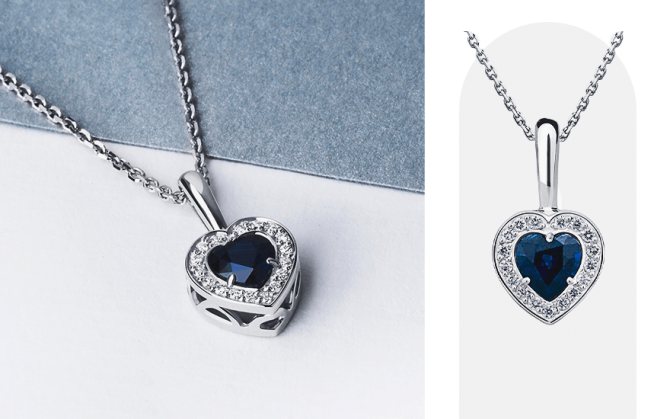
Every fan of the Titanic remembers this romantic pendant in the shape of a heart, complemented by a scattering of diamonds and a large dark blue sapphire. The jewelry created by Platinum Lab jewelers is, of course, not the “Heart of the Ocean,” but it looks no less impressive. We suggest wearing it paired with classic trouser suits and luxurious evening dresses.
Order a pendant
Ring with emerald and diamonds
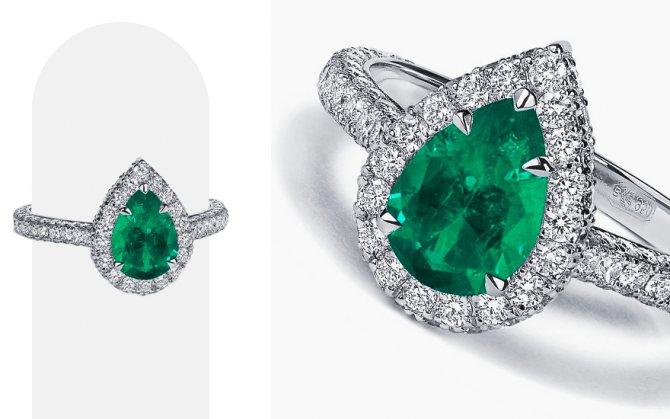
A rather striking diamond and emerald ring that will be an instant success at any party or social event. Thanks to the unusual aquamarine shade of the main stone, the decoration looks very fresh and even summery, so it’s time to add it to some boring autumn-winter look. We assure you that this ring will suit any outfit and will certainly be an excellent alternative to boring track rings.
Order a ring
Earrings with rubies

Simple, yet sophisticated, earrings with rubies will add a different touch to any outfit. They can be worn both on a special occasion and every day, easily combined with simple jeans and T-shirts. If the rich crimson shade of the stone seems too pretentious for you, the Platinum Lab website has more versatile options with diamonds, pearls and simply without inserts.
Order earrings
